'Indiana Jones and the Dial of Destiny': An Ode to Static Heroism
Plus, Disney, modernism, and the science of pop culture cinema
A few posts ago, I wrote about Alien: Romulus and argued that franchise fare can be conducive to great cinema in equal measure that a hearty indie flick or auteur-helmed prestige picture can. I want to capture a similar sentiment with Indiana Jones and the Dial of Destiny here.
Because when you really get right down to it, the tentpole schlock that we so rightly villainize only deserves to be villainized because it’s treated like schlock from the creative jump. In truth, video game adaptations, superhero blockbusters, legacy sequels, and even remakes1 are all perfectly capable of manifesting as great movies. The problem is that the suits pulling the strings are less interested in making great movies and more interested in designing products that both channel and pander to a distinct lack of imagination — disempowerment by way of comfortable glucose, urging us audiences to be afraid to be more, and leading such fear by example.
The pessimist in me sees these flashy IPs as lazy packaging for lazier boardrooms that don’t even have a box to think outside of.
The optimist in me sees these flashy IPs as supremely fascinating creative restraints to play in, void only of the freedom that the right team of artists would need to play.
The realist in me sees these flashy IPs as supremely fascinating creative restraints to play in, void only of the freedom that the right team of artists would need to play.
The screenwriter in me sees these flashy IPs as supremely fascinating creative restraints to play in, void only of the freedom that the right team of artists would need to play.
To that point, an unimaginative faceplant could very well have been the fate of Dial of Destiny if the reins had gone to a studio yes-man. Luckily, they went to James Mangold instead, and so the film emerged as a deceptively gutsy and nuanced meditation on heroism filtered through the ever-appropriate lens of one of the most beloved heroes to ever grace the big screen, and pop culture more broadly.
But before we get into that, we should talk about the special sauce of pop culture filmmaking first.
Now, I’m far from the first person to point this out, but when it comes to big franchise fare like this, the influence of the filmmaker is noticeably limited. That is, the significance that the camera, frame, and other technical aspects have in the film is heavily diluted, if not entirely absent.
In its place? A near-total deference to the piece of pop culture that’s being documented, whether that be Superman, Luke Skywalker, the Avengers, or Indiana Jones. This, to imply acceptance that the material — the cultural prevalence of the subject — dwarfs the storyteller.
Lazy, uninterested filmmaking that’s only being done for the paycheque? Nine times out of ten, maybe, but I would argue there’s a strength to be found in this approach, and it’s one that Mangold seems to have tapped into here.
The strength in question? Well, by deferring entirely to the weight that these characters carry in the pop culture sphere, you can consciously defer to the history and thematic significance that these characters come preloaded with. If you simply point a camera at Superman, you’re automatically trafficking in ideas like hope, the immigrant experience, power, and the human capacity for good, just to name a few.
All that’s left to do is humbly follow Superman in this new entry into his codex, which hopefully takes the form of a story that grounds itself in the ideas that Superman’s presence implies, and then dutifully expands upon them.
In other words, so long as the script has a conscious interest in and is narratively capable of expanding on what these characters and worlds already represent, it really is enough — even arguably preferable — to let the filmmaker’s tools take a backseat in the storytelling vehicle here.
Unfortunately, the suits up in the Hollywood towers — who only understand IP as tried-and-true set dressing for a product that they’re trying to sell — are the apex predators of a good script, which pop culture filmmaking lives and dies by.
James Gunn — having been painfully beholden to Marvel’s mandated CGI army third act in Guardians of the Galaxy Vol. 3 — understands this whole game. I hardly think it’s a coincidence, then, that Gunn has made clear that the top priority for his DC Universe is the scripts. And indeed, the page has been the leading source of the superhero auteur’s power for nearly a century now. Alan Moore? Grant Morrison?
So, what happens when you point the camera at Indiana Jones? What narrative history floods the frame upon capturing that hat, that whip, and Harrison Ford’s timeless ruggedness?
A lot of things, but above all is a good man who’s confident that he’s doing good things.
It’s Dial of Destiny that asks, “What if the world no longer reflected what Indy has always understood to be good?”
The opening sequence of Dial of Destiny appears like a retread of the all the scrappy, high-octane hijinks of the Indiana Jones’ of yore, because that’s precisely what it is, and strategically so — the key word here, you see, is yore.2
In this scene, Indiana Jones is facing off against Nazis, who are making a last-gasp effort to win World War II in the year 1945. Here, Indy beats the snot out of Nazis, enables his friend Basil Shaw (Toby Jones) to shoot Nazis, venomously insults Nazis, and generally makes Nazi lives miserable because they are Nazis.
Horrors of WWII notwithstanding, this is a time period that makes sense to Indy. This world does not question, deconstruct, or otherwise behave in a way that detracts from the punching of Nazis, because everyone pretty much agrees that questioning or deconstructing the punching of Nazis would distract from the fact that Nazis deserve to be punched, which is and should always be the key matter in any given Nazi-related situation.3
This societal consensus about Nazis circa 1945 owes itself to the principles of modernism, which of course is still going on at the time that Indy is punching all of these Nazis. These principles are key to understanding Dial of Destiny’s narrative nuances.
As such, this is the part where I offer up the single most elementary crash course in modernism versus postmodernism that you will ever encounter. It also happens to be, in my opinion, the only one you will ever need:
Modernism, the defining cultural movement of roughly the first half of the 1900s, was characterized by clearly-defined values that could be wholly trusted by the individual. These values were primarily defined by their commitment to romanticized progress and enlightenment. These values were the goal.
Meanwhile, postmodernism, which we’ve been living through since roughly 1960, is characterized by the deconstruction of these values that we once trusted with impunity. The deconstruction is the goal.
In other words, modernism is “Yes, and therefore I, specifically, must…” whereas postmodernism is “Well, actually, no.”
To reiterate, this first scene in Dial of Destiny takes place during the modernist period. Society, at this point, had long since rejected thoughtless adherence to mass tradition and convention, instead embracing the creative and existential capability of the individual, who was driven by goals like truth and progress.4
And so punching Nazis — who are categorically anti-progress on too many levels to list — makes perfect sense to the modernist individual, such as a middle-aged Indiana Jones. There is no world that so much as suggests that punching Nazis does not make sense.
At least, not until the late 1960s, which is when the bulk of Dial of Destiny takes place.
When we’re first introduced to Old Indy™, he’s sitting in his apartment, spiritually beaten down by a world that’s forgotten about him, and is violently startled awake by his young neighbour blaring a song by The Beatles.
The Beatles, of course, have long been fought over by modernists and postmodernists to the tune of which era the band more aptly represents. Just as well, Indy is caught between two worlds:
His familiar modernist world, which reflected the principles that had always led him to his Nazi-punching decisions…
…and this no-man’s-land of postmodernism, where Nazis are employed by NASA and taking meetings with the POTUS.
Indeed, what’s going on here? Nazis in NASA? What does this world even believe in anymore? Even the countercultural Vietnam protestors — numbering in the hundreds — coiled in fear when Klaber the Neo-Nazi (Boyd Holbrook) shot his pistol into the sky, whereas Indy never hesitated to clobber Nazis all by his lonesome in the belly of the white supremacist beast. Have Indy’s actionable, humanist values been deconstructed to the point where they’re now just decorative impressions of those values?
One thing is for sure — this new world is here to stay, and it is no longer reflective of the modernist black-and-white heroics that Indy so reliably defined himself with throughout his heyday. So, is there still a place for people like Indy? Can he still be useful? Can he still be a hero in a world that purposefully doesn’t have its finger on an unquestionable pulse of heroism?
Yes, he absolutely can, and we owe it to his goddaughter Helena Shaw (Phoebe Waller-Bridge) for showing us the way to this answer.
A lot of people hated Helena, but in the context of this Indiana Jones story, she’s objectively a stroke of genius. This is a textbook postmodern heroine — the perfect character for riffing on the temporal-cultural nuances of Indy’s personal crisis.
Indeed, Helena’s mortal essence absolutely drips with a postmodernist sheen. She’s performatively ironic, snide, and sarcastic (signifiers of a cultural movement that actively sought the collapse of established meanings). She gleefully, if rudimentarily, obliterates the veneer of capitalism — a hallmark of the industrialization period that coincided with the modernist movement — with one cheeky quip.5 She eschews the enlightenment aspect of history while trafficking in the black market antiquity scene, in full rejection of established economic institutions.
All this, and she quite aggressively and chaotically ropes Indy into this caper to the point of no return, forcing Indy to face this new world that, by all appearances, he was ready to unceremoniously fade away in.
So, not only does Helena embody this new postmodernist world as a character, but she also represents the inevitability of having to face the tides of change, even (nay, especially) if they don’t favour you. So, rather than surrender to the misfortune of a world that’s forgotten about him, Indy is forced to defiantly gallop headlong into it, not knowing for sure if he still has anything to offer.
But sure enough, no sooner does Helena yank him back out into the field do we see that Indy is as handy as ever. For every sticky scenario that Helena manages to get them out of, Indy leads the charge on another. Be it his knowledge of Moroccan gum, calling in favours from old friends (who are also of the modernist period), or leading by example in what’s apparently the lost art of Nazi-punching, Indy proves to be no less useful in this postmodernist world than he was in the modernist world.
So, what does this have to do with heroism? To answer that, we need to look back on Indy’s past adventures in tandem with Dial of Destiny.
You know that age-old joke/observation about the Indiana Jones films and how Indy’s presence doesn’t actually affect the outcome of the film’s plot? Or, at the very least, how it’s not Indy who ultimately saves the day?
In Raiders of the Lost Ark, the Nazis die on account of their own hubris, and Indy is just kinda there.
In The Last Crusade, the Nazis die on account of their own hubris, and Indy is just kinda there.
In Dial of Destiny, the Nazis die on account of their own hubris, and Indy is just kinda there.
Except, he’s not just kinda there. He’s there, full stop. He’s still punching Nazis, plotting to punch Nazis, and actively putting himself in harm’s way so as to stand against Nazis. He’s not achieving heroism by way of world-saving; he’s choosing heroism by way of Nazi-punching.
Dial of Destiny might be his greatest triumph in this regard, because he finds himself standing against what could very well be the greatest possible evil that a single human could embody in Jürgen Voller (Mads Mikkelsen), whose odyssey is driven by his casual belief that he would make a better Hitler than Hitler.
Can you imagine believing that about yourself? To want to actualize that belief? That is undiluted evil we’re talking about, and NASA hired him for the Space Race instead of punching him.
So nevermind that Indy has nothing to do with this evil’s ultimate failure — the simple fact that he’s standing against and trying to disrupt an evil like this is definitive heroism.
Thus, in Indy, we can come to understand that heroism is not defined by what the hero accomplishes, but how the hero chooses to affect their sphere of influence. The fate of the world exceeds Indy’s sphere, but Nazis do not. You can’t count on Indy to save the world, but you can count on him to punch a Nazi, and in a world that’s letting Nazis meet the POTUS instead of encouraging an anti-Nazi culture, people like Indy are indispensable.
“I hate snakes.”
And so Indiana Jones has a responsibility, as a hero, to live. He must exist in this world even when it seems to have left him behind — he is a known-quantity force for good, and every instance of such a force needs to persist as long as possible, because the evil that it stands against isn’t going to go away.
Indeed, remember when Voller was hanging off the side of a speeding train in 1945, and collided head-first with that metal tower, knocking him off the train with a sickly, almost cartoonish smack? And he survived?
Many dubbed it lazy writing, but that incident served two, very serious narrative purposes:
It highlighted how we need to be loud and unsubtle about the punishment that Nazis deserve.
It reminded us that the evil that Nazis represent will never die, and so heroism like Indy’s — no matter how big or small the sphere of influence it occupies — must always be pursued. Evil triumphs when good men do nothing.
That’s why every shot of Indy’s iconic gear, every John Williams flourish, and Sallah’s rousing “Give ‘em hell, Indiana Jones!” are so genuinely meaningful. On the surface, they may just seem like gratuitous smatterings of fan service, and maybe that’s how the Disney suits see them, too.
But if you look deeper, one can recognize that these are visual and auditory symbols of a man who chose to defy evil even when the rest of the world so recklessly forgot how to. That’s heroism, folks, and it’s within arm’s reach of us all.
And his reunion with Marion that directly nods to their intimate scene together in Raiders of the Lost Ark? Well, that’s Indy’s personal arc coming to an end — he knows now that he has to live because of the significance that he, like every individual ever, holds within his individual sphere of influence. He may not have saved the world, and the wider world may be thankless as far as his Nazi-punching deeds, but he’s as significant as ever to those in his sphere, and it’s high time he rediscovered that significance within himself.
Maybe the world did forget about Indy, but when has Indy’s worldly insignificance ever stopped him from being a hero? Why should it stop anybody?
All of this and more, ladies and gentlemen, is what happens when you point the camera at Indiana Jones and bless him with a good script. And now, should a camera ever get pointed at Indiana Jones again, the thematic additives of Dial of Destiny will permeate the frame as well.
Of course, Indiana Jones has since been abandoned by Disney, who intend to pour all of their Lucasfilm resources into Star Wars. When I heard this, my mind went to two places.
The first place: That probably explained why Disney didn’t seem to have their hands all over Dial of Destiny, and it’s probably no coincidence that this movie didn’t suck. In any case, it reinforced my belief that a large swath of these major franchises are in need of rescuing from the film industry in equal measure that audiences and creatives are.
Because, folks, I will happily stand on the assertion that pop culture sandboxes are as nutritious a creative space as any, and I frankly find it disheartening that so many people don’t seem to separate them from the boardroom bullshit that turns these movies into sloppy products instead of hearty expansions to an established storytelling history.
The Crow — an IP that has been cinematically realized on both ends of the creative nutrition spectrum — is exemplary of this. Transformers as well, thanks to Josh Cooley’s much-needed balm of Transformers One.
Moreover, Denis Villeneuve’s monumental Dune films could just as easily have gone the way of The Electric State if the wrong pair of hands had gotten to Frank Herbert’s novel first. Star Wars and Marvel were genuine storytelling spaces long before they were co-opted as brands.
So I ask you: why do so many of us choose to also see these IPs as nothing more than brands when we know good and well that they can and should be genuine storytelling spaces? Lots of streaming-exclusive dumpster fires come from original scripts, but we wouldn’t be caught dead sullying the name of originality on their account.
The second place: Is the Indiana Jones IP now just going to languish in the depths of Lucasfilm? Why not temporarily loan the rights to Indiana Jones out to another studio? A studio that doesn’t operate within the self-encumbering confines of mass appeal? Why not let them cook up a Young Indiana Jones movie so as to build upon the thematic heft of this world? How does a boy grow into a legendary Nazi-puncher?
I’ve said it before and I’ll say it again — pop culture is a tool that must, at some point, be leveraged for the sake of this bright cinematic future that we wish to build. There’s nothing wicked about using culture to create culture, and I would also argue that positioning ourselves as above pop culture is the exact attitude that’s helping to drive this slopification of IP.
This to say, IP can only cheapen cinema if the film was always going to be cheapened anyway, and it’s the living, breathing culprits behind said cheapening that we should be taking to task, rather than the comic books, video games, and George Lucas neurons that they’ve taken the liberty of abusing time and time again.
Finally, when I talk about things like Indiana Jones’ sphere of influence, that includes the real world as well as his own. This is a character that has inspired generations of filmgoers with his adventures and heroism, but heroes need help too, as exemplified by the intervention of one Helena Shaw.
So when, pray tell, are we going to take care of these timeless heroes and worlds? Because Hollywood sure as hell isn’t.
Remakes, admittedly, suffer from a different problem than the other three. In these cases, it’s not how the remake is approached that’s the problem, but what’s being chosen for the remake. The ideal (read: acceptable) remake candidate is a film that didn’t reach its full potential the first time around, and would very obviously benefit from having a fresh pair of creative hands and eyes on it. Disney got The Lion King right the first time, so a live-action remake has little to no value outside of being a nostalgia trap (and, evidently, a highly effective one). Treasure Planet, on the other hand…
yore - “of long ago or former times (used in nostalgic or mock-nostalgic recollection)”
Most of you know that I’m a staunch humanist who believes in a person’s capacity to change, but if someone openly harbours Nazi ideology, they’ve blown right past ignorant bigotry and are declaring themselves as active enemies to humanity. If they renounce it and make reparations later in life, great, but until then, they will deserve every punch made against and wished upon them.
Not to imply that the 1940s were the “good old days,” of course. I trust you to trust me that I’m making all of these points in good faith, and with respect the context that Indiana Jones traffics in.
This quip was part of the film’s marketing, which I will forever and always get a kick out of.





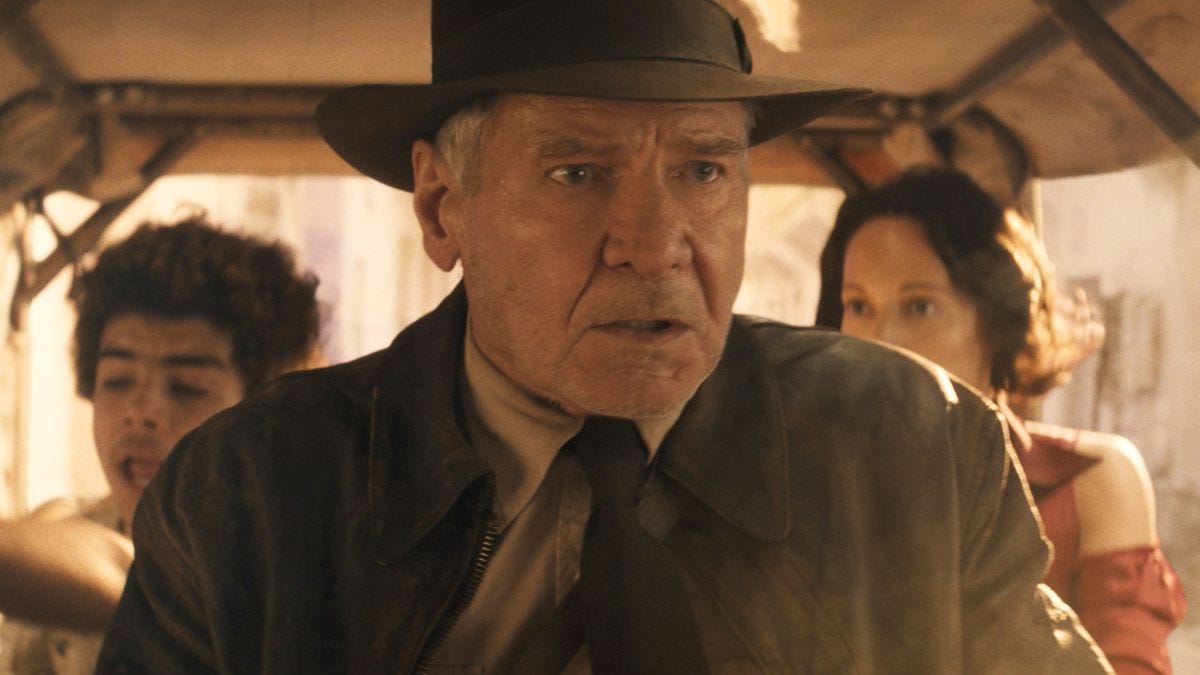
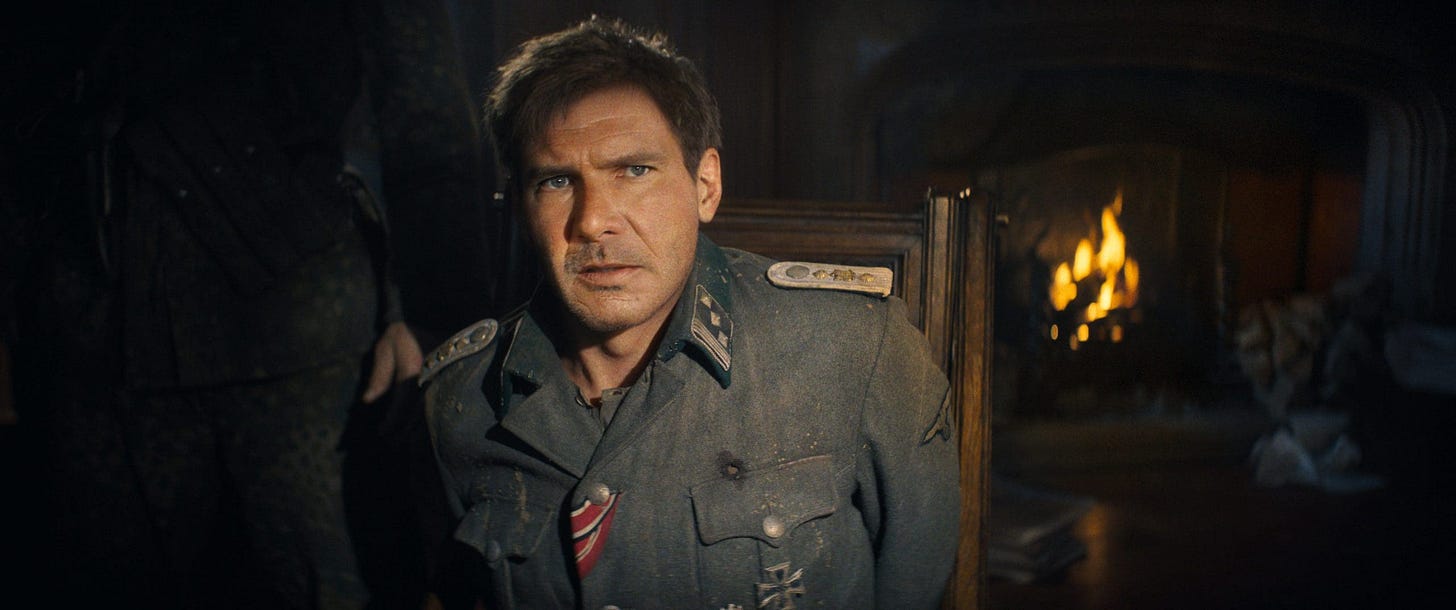
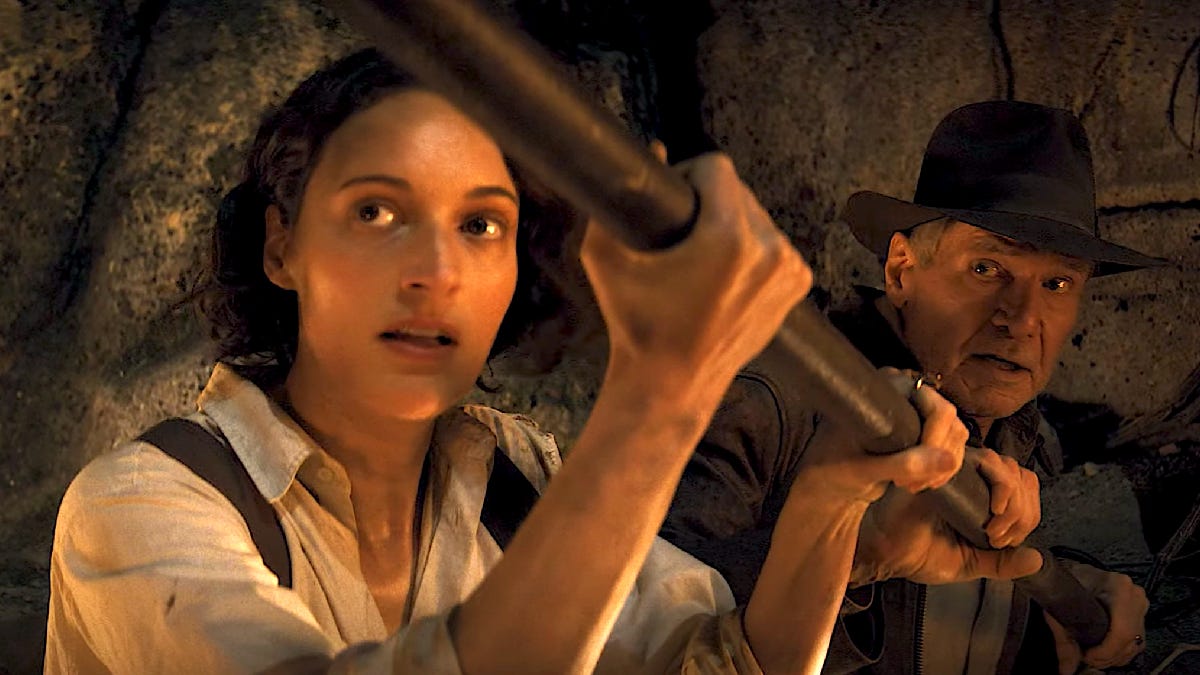
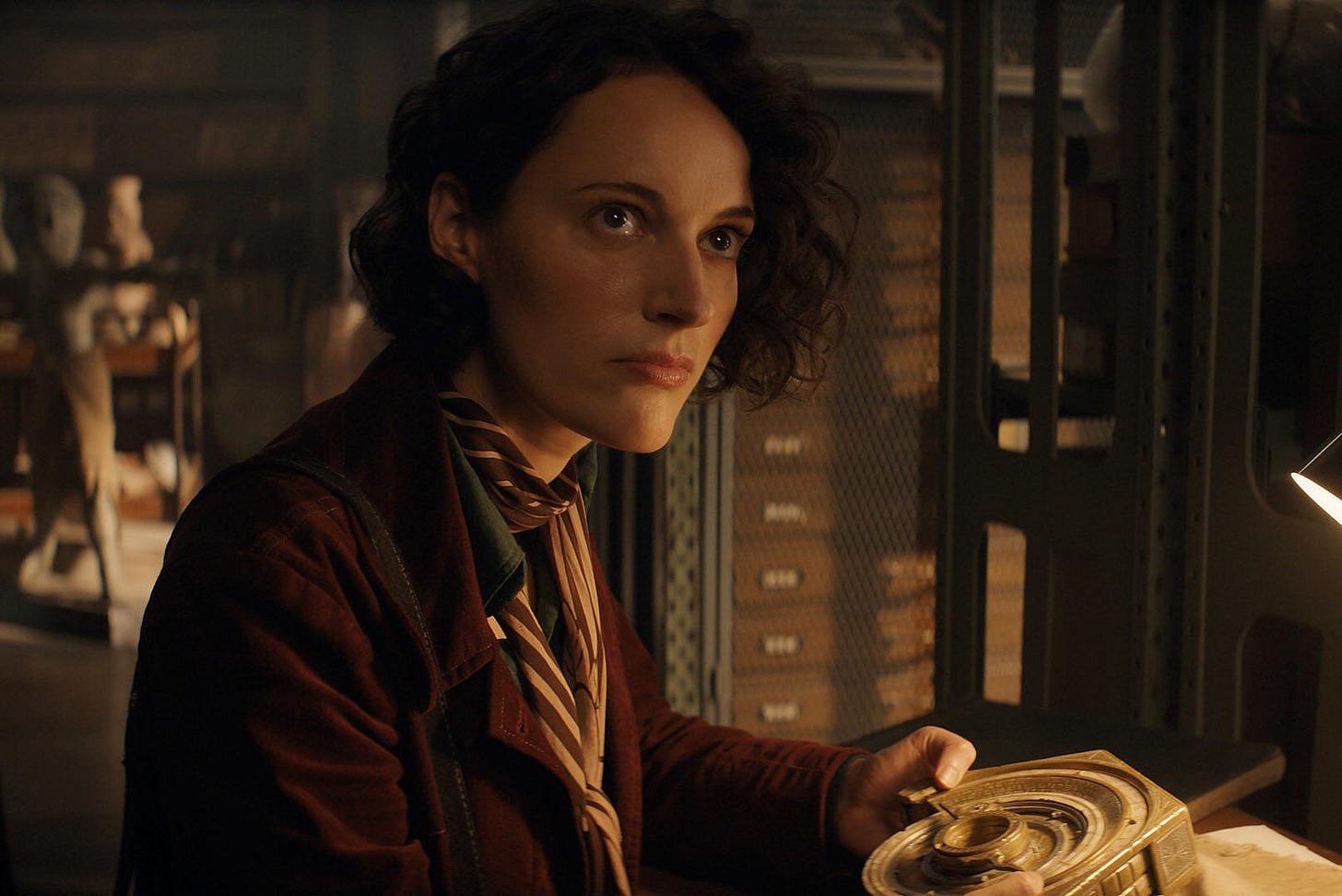
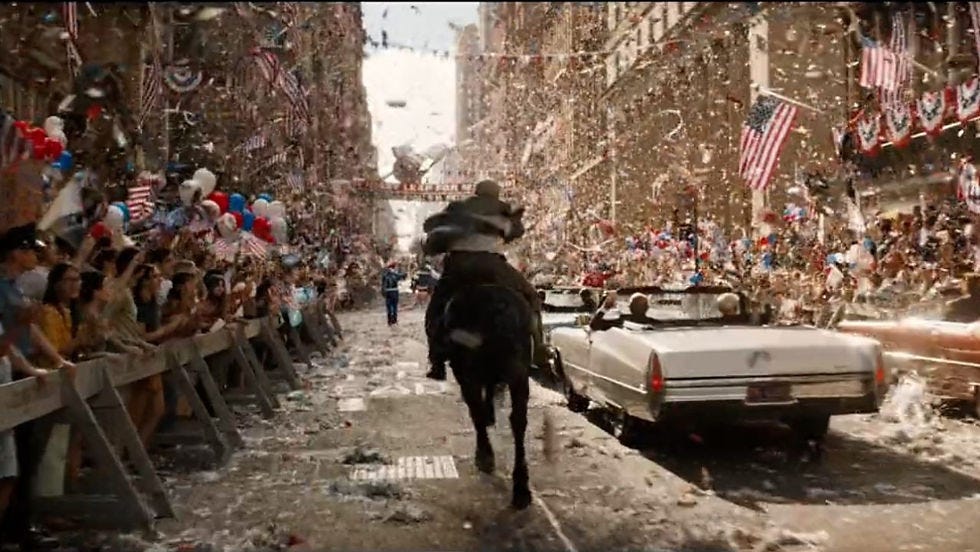
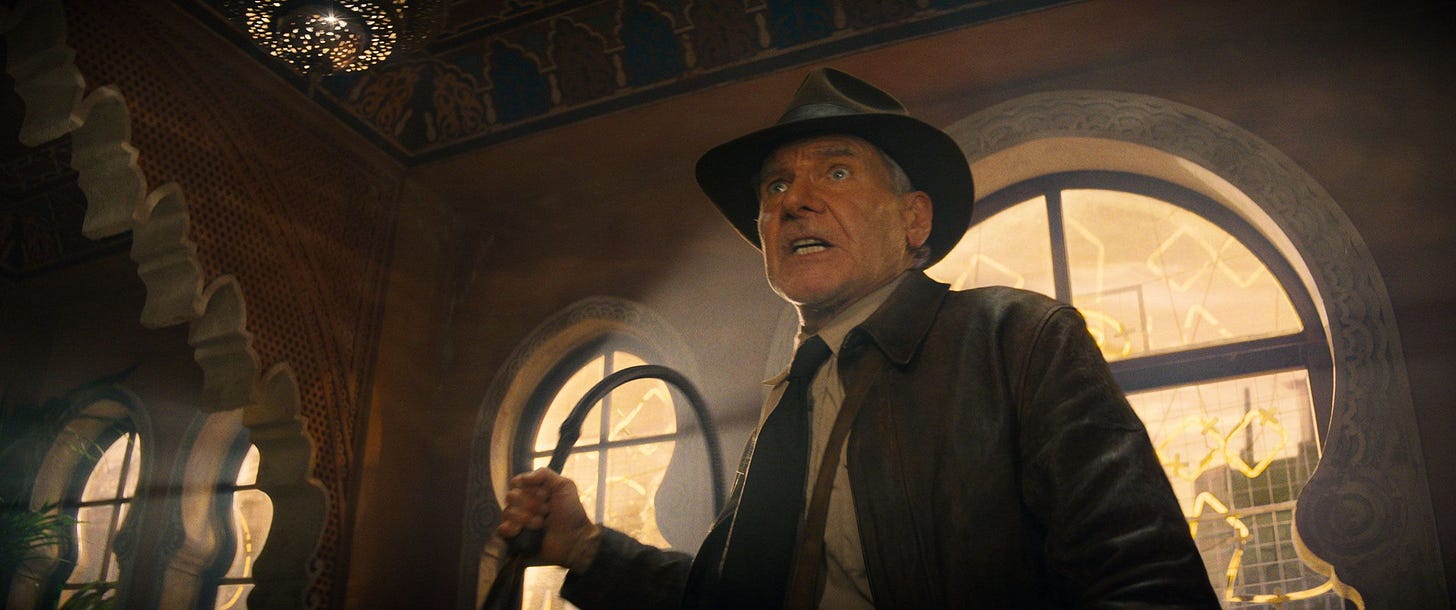
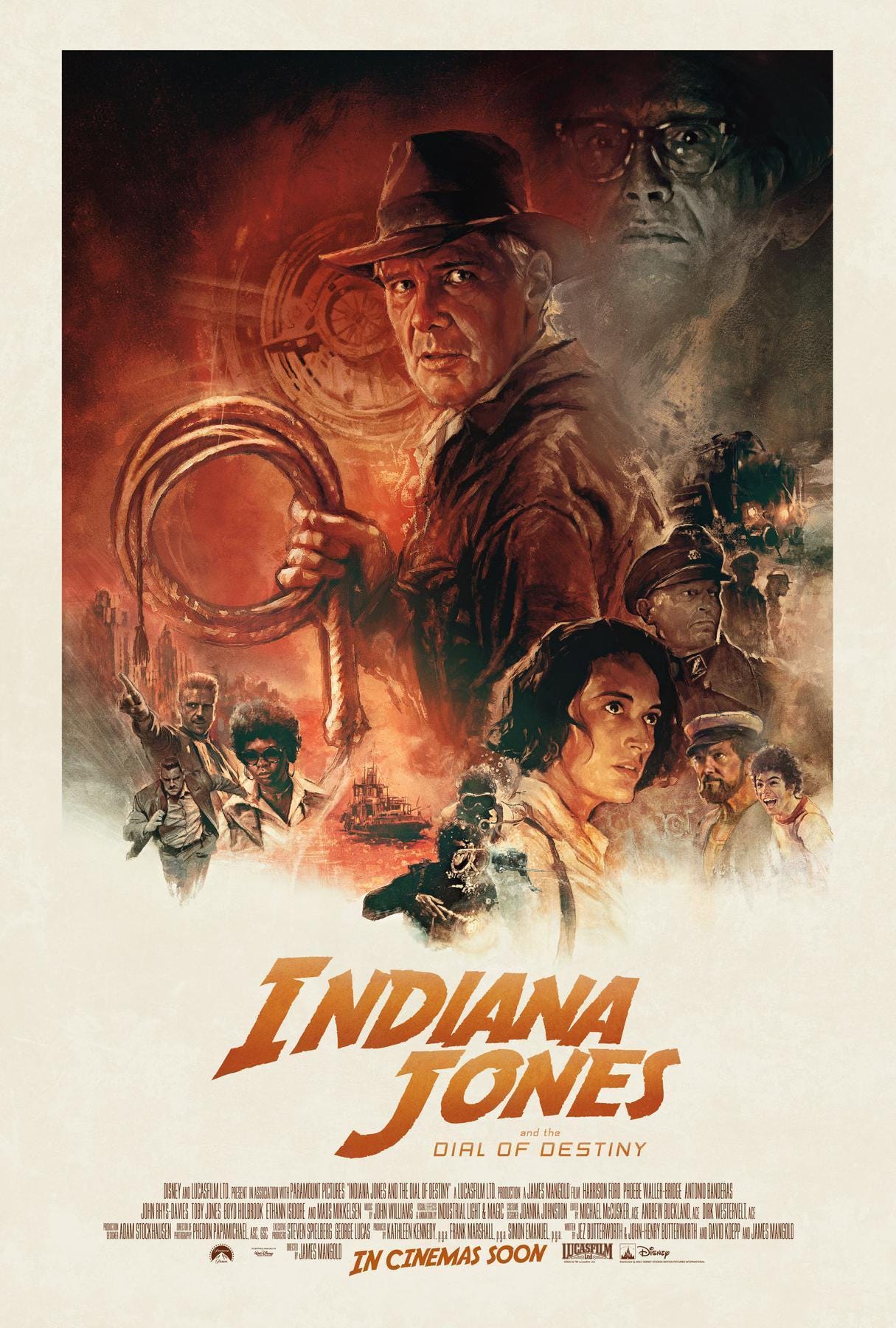
Charlotte, I just have to say: putting aside my own history with the Indiana Jones films — especially Dial of Destiny — you’ve articulated everything I believe about this film, but with far more eloquence and thoughtfulness than I ever could. I truly love this piece. It deserves to be shared with anyone who’s forgotten the power of a great heroic cinematic character. You see through cinema and its influences with a depth that surpasses any famous film historian or critic I’ve read.
And now, after reading this, I think I’m ready to revisit Dial of Destiny — and perhaps, in doing so, it will help me navigate my own grief. My father, who introduced me to cinema through this character, has always been, in a strange and private way, my symbol of heroism. Maybe this is how I finally allow myself, as I know I should, to accept that he’s truly gone.
Thank you for reminding me — and all of us — why these stories still matter.
"Why not let them cook up a Young Indiana Jones movie so as to build upon the thematic heft of this world? How does a boy grow into a legendary Nazi-puncher?"
They did that quite well in the "Young Indiana Jones Chronicles" TV show from many years back. That could be a starting point..